




| Cinnabar Moth (Tyria jacobaeae (Linnaeus, 1758)) |





|
|
Scientific name: Tyria jacobaeae (Linnaeus, 1758) Common name: Cinnabar Moth French name: Goutte-de-sang, Écaille du séneçon, Écaille carmin. Order: Lepidoptera Suborder: Heterocera Family: Arctiidae Subfamily: Arctiinae Wingspan: 32-42 mm. Biotope: Open dry or with low humidity areas: meadows, road sides, rocky slopes and coastal sand dunes. Presence of the host plant is a mandatory factor. Geographic area: Europe, western and central Asia. It has been introduced to Australia, New Zealand and to the United States to control and limit the proliferation of poisonous ragwort (Senecio jacobaea) on which caterpillar feed. Flight time: May to August. Number of generations : 1 Caterpillar: The caterpillar is bright orange yellow with a black band around each segment. The head is black. They live in large groups on the host plants and become toxic by absorption of poisonous substances. So there are very few predators. Host plant: Common Ragwort (Senecio jacobaea) and, in mountain areas, Colt's-foot (Tussilago farfara) and Petasites, in particular Common Butterbur (Petasites hybridus). |
The forewings are black with a red stripe towards the front margin and two red spots on the outer border. The hindwings are red with a thin black outer border. The imago flies during the night but you can also see it during the day when disturbed. The flight looks hesitating. The Cinnabar Moth over winters as a pupa under the ground. |
| [To know more about the Cinnabar Moth] [Next picture] [Top] |
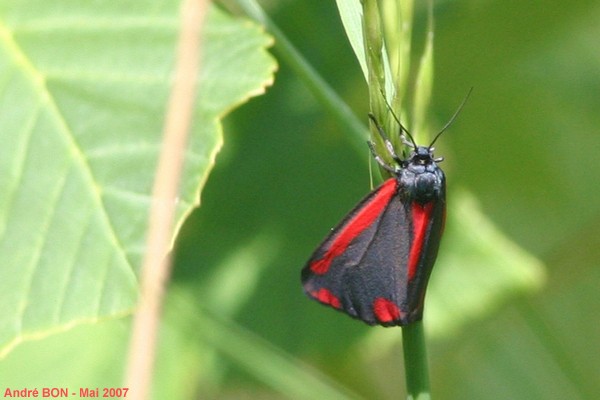
|
The Cinnabar Moth's red colour attracts the attention as soon as it flies. It has a hesitating flight and will land not far away. |
| [To know more about the Cinnabar Moth] [Next picture] [Previous picture] [Top] |
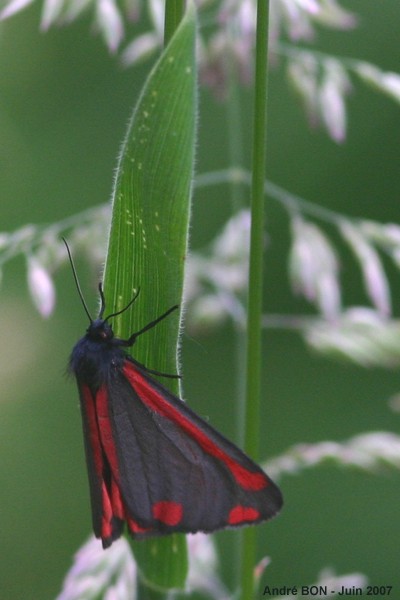
|
I have observed this Cinnabar Moth on a woodland edge. |
| [To know more about the Cinnabar Moth] [Next picture] [Previous picture] [Top] |
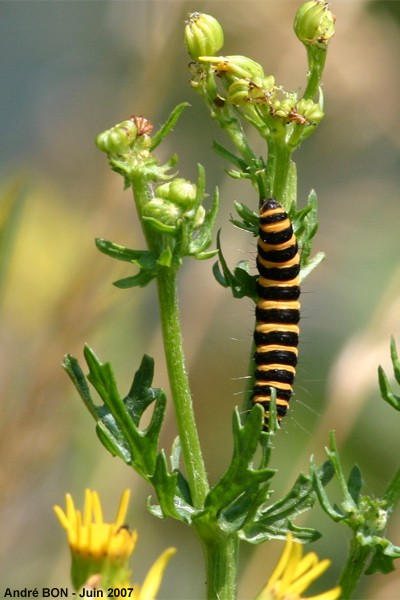
|
Here is my first success about caterpillar hunting. I have observed one Cinnabar Moth about one month ago. Then I studied about the host plant and the caterpillar season. Coming back to the same place, Common ragwort and caterpillars were waiting for me. |
| [To know more about the Cinnabar Moth] [Next picture] [Previous picture] [Top] |
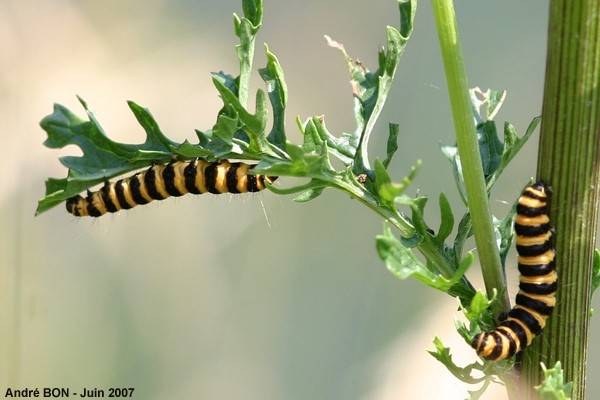
|
The Cinnabar Moth's caterpillar is very typical and easy to identify. There was a huge number of caterpillars. This is a proof that they have few predators. |
| [To know more about the Cinnabar Moth] [Previous picture] [Top] |
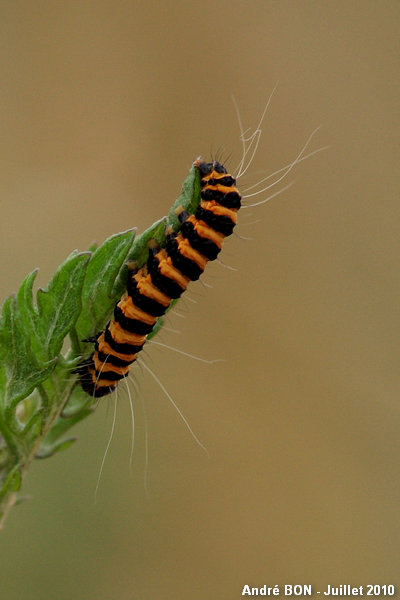
|
The Cinnabar Moth's caterpillar has short black hairs and some sparse long white hairs. |